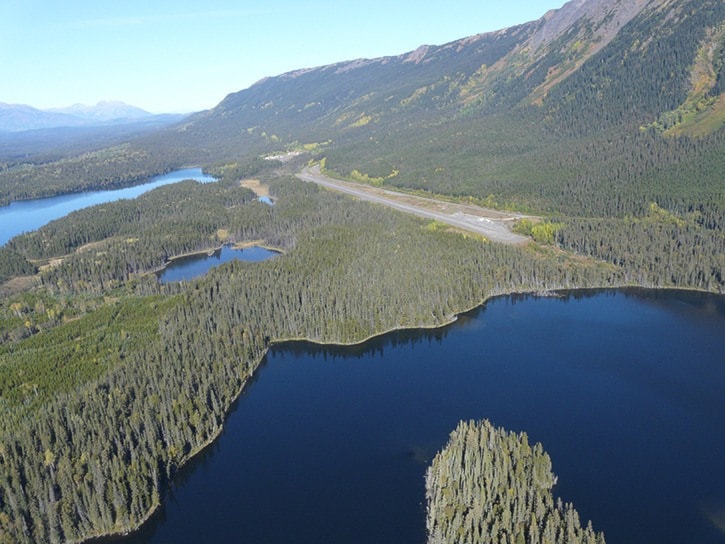The non-profit society running a gravel airstrip at Bob Quinn Lake along Hwy37 North is closing it down the end of this month.
The society hasn't qualified for any type of government assistance over the years and it's never been able to develop a dependable and consistent income based on industrial use, says Keith Routley from the Bob Quinn Lake Airport Society.
And now with repairs needed to a portion of the 4,000-foot long strip, the society doesn't have the money for the work, he said.
“We're just a bush airstrip. That's what you could call it,” said Routley of the airstrip which is 100-feet wide and has no buildings.
He was able to get money for the airstrip from companies during periods of industrial activity but when projects finished those companies moved on.
And in that fashion, the airstrip fell right in line with the boom-bust economic nature of northern resource development, Routley added.
Ideas such as placing it within a local government benefitting area to establish a tax stream or acquiring other crown land were not realized.
The airstrip's society did learn this spring of a provincial program but it would require the society to put up 25 per cent of the budget for any work and that's money the society just doesn't have, he said.
As it is, the society runs on a shoestring with Routley acting, as he calls himself, its “chief cook and bottle washer” and society father dating back to its first days.
Closing would be a shame because the airstrip is centrally located to potential resource projects, Routley continued, because it's in a climatic zone where warm air reduces the amount of snowfall and it has a reliable approach.
It was built by the province during the last days of Bill Vander Zalm's Social Credit government in 1990, he said.
“Back then it was what you could call the Iskut gold rush. There was a lot of activity. The worry was that the Americans would benefit by coming up the Stikine River to supply the camps,” said Routley.
That convinced the government of the day to counter any American activity by constructing the airstrip.
Its longest user was the Eskay Creek gold mine which closed in 2008. It was also used to an extend by NovaGold for its Galore Creek project before cost overruns shut down work there and just lately, it saw use during construction of BC Hydro's Northwest Transmission Line.
For several years, the airstrip was on the list of stops as part of a seasonal service by Northern Thunderbird Airlines from either Smithers or Terrace.
At the beginning of this month, AltaGas used the airstrip to bring in company officials and others for the official opening of its run of river power projects on the Iskut River.
Closing would be a shame because the airstrip is centrally located to potential resource projects, Routley continued, because it's in a climatic zone where warm air reduces the amount of snowfall and it has the best landing approaches of any smaller airstrip in the region.
Officially closing the airstrip, which will happen when its insurance runs out at the end of this month, means filing notices with aviation authorities, placing a large 'X' made out of white plastic strips on its surface, removing a windsock and removing oil barrels which now act as boundary markers.
“But we couldn't stop people from using it if they wanted to anyway,” said Routley.
